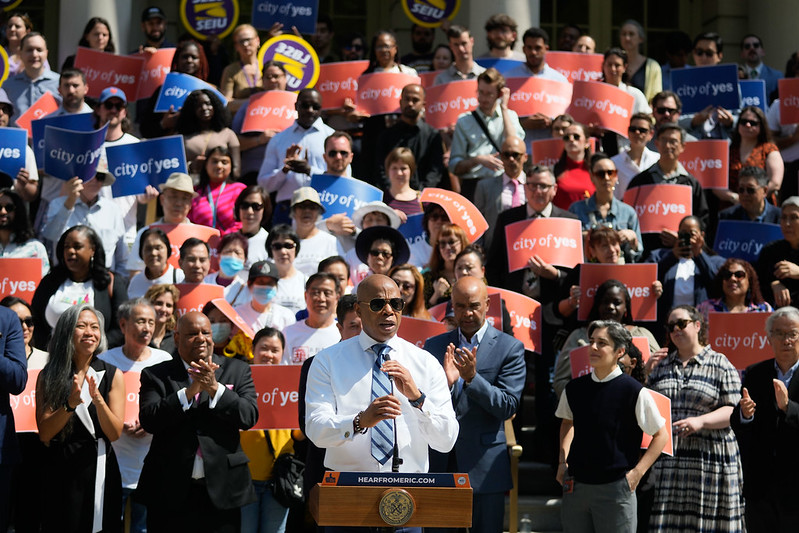During a Wednesday marathon session the City Planning Commission heard testimony from almost 200 people who were equally divided on the City of Yes Housing Opportunity proposal. Supporters were mostly developers, architects, funders, clergy, progressive activists and just plain folks. Those opposing were mostly from outer borough community associations and historic preservation organizations.
Half testified via Zoom, including one poor soul waiting for hours on his iPhone, by which time he was in a dentist’s chair. Sitting in the hearing room in the basement of 120 Broadway for more than 10 hours was no less painful. But I wanted to explain why I opposed the City of Yes.
The city’s 1,386 pages of zoning text amendments published in April contain some great items (empty office building spaces can be converted to residential, more incentives for affordable and supportive housing, etc.). But many amendments target neighborhoods filled with 1 and 2 family homes in the outer boroughs that are within a half-mile of public transit.
There, multiple dwellings can be built on the corners of most residential streets; any garage can be converted into living space; any private homeowner can erect a 25 foot tall dwelling in the backyard; homeowners can almost double the size of their houses; parking for new housing is no longer required. All that is “as of right” — no review, no checks.
The inherent decency of absentee owners and rapacious developers, overseen by a suddenly energized inspectional apparatus will all just be assumed. In fact the city’s armchair Environmental Impact Statement admits there’s no way to measure all the impacts these changes will have in all communities, so they measured none.
So I told the Commission about a very specific adverse impact: Glenwood Road and its beautiful mall — the southern bookend to Victorian Flatbush’s Albemarle Road mall — is the major gathering place in my neighborhood, the site of food pantries, Halloween parades and block parties.
An old church and 31 equally historic houses stand along Glenwood Road. And 20 of them will be targets for speculation and teardowns under the City of Yes rules, replaced by three to five-story walk-ups with up to 10 apartments or condos. None of them would be affordable.
The City of Yes intends to reduce rental cost by increasing supply — an annual average of 110 new units in each of the 59 Community Districts. It seems like a small return for destabilizing a neighborhood. Particularly when Victorian Flatbush has averaged 160 new units a year thanks to a carefully crafted remapping of the area in 2009 by City Planning which upzoned commercial avenues for development but protected residential streets.
However, the new regime has ignored all these local histories, buoyed by the equal support of the progressive community and real estate developers. Not only the Times, but the Daily News is on board. In fact a News editorial in April opined: “What should be dismissed offhand is anything that too heavily emphasizes ‘neighborhood character’…For those who desperately want to live in a suburb, we’ll remind you that there are several in the immediate vicinity of the five boroughs.”
Robert Moses? Is that you calling on the other line? The emergent need for new roads has been replaced by the super-emergent need for new condos and if we have to destroy “neighborhood character,” well, in the name of equity we all must suffer, comrades.
These immense proposals are being rushed through on a timeline that cynically truncated the time for Community Board and public review. What could go wrong? Well, according to the Community Boards, plenty. As of this writing, 43 Boards have voted. The tally is 23 in the outer boroughs say No and only two say Yes (Park Slope and Midtown), with 19 in the middle requesting changes (15 have yet to vote). This opposition occurred in the absence of publicity or any organized solidarity of low density districts. Just volunteer Community Board members doing their homework..
Victorian Flatbush has had a nice 125 year run. I suppose if slum removal were the pretext, we’d have the support of enlightened urbanologists. But unlike the 1950s, there will be no Robert Moses’ bulldozers used by the Department of City Planning. Just death by a thousand cuts unless the City Council steps up this fall.
Enright grew up on Flatbush Ave. and is retired from the FBI.
